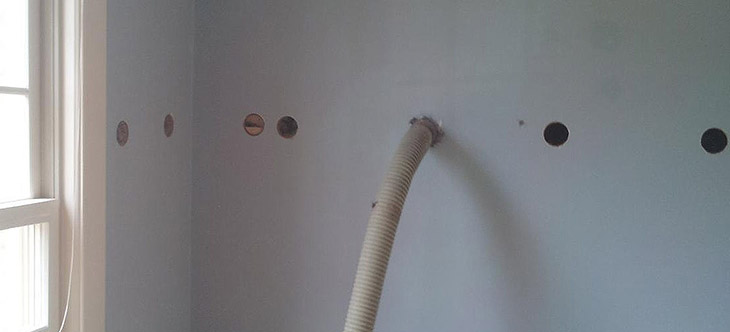Closed-cavity insulation is unique in that it applies only to old construction (or closed) walls.
To install insulation in a closed cavity, it is necessary to create some sort of opening, usually a 2-inch hole, into each of the stud bays in the area you wish to insulate. The access can be either from the interior or the exterior of the building.
Once the insulation is densely packed into the cavity, the access hole will be plugged and patched. This is the most un-evasive way to insulate your exterior walls on an existing structure.
Why Use Closed-Cavity Insulation?
Closed-cavity insulation is often applied to older homes and structures with either inadequate or no insulation at all.
Where other methods of insulation may be too invasive or ineffective in insulating these older buildings, closed-cavity insulation gets the job done by filling the empty spaces in between walls via a pneumatic hose that blows and compacts the insulation material.
How Does Closed-Cavity Insulation Work?
Small holes are strategically drilled into each cavity space, either from the interior or exterior of the wall. The pneumatic device is inserted into the wall one hole at a time.
Exactly how much insulation is used and for how long the insulation is blown into the cavities depends on the nature of your specific project.
Regardless, you can rest assured that this method is the safest way to insulate older structures without creating too much invasive damage to its fragile exterior and interior.
Benefits of Closed-Cavity Insulation
Some benefits of this type of insulation include:
- Fast and easy installation;
- Reduction in energy bills;
- Minimally invasive for older structures;
- Greater fire safety.
These are only a few; there may be more for your specific project depending on the R-value of the insulation used.
Get 5% Off + A Free Estimate With Bulldog Insulation!
Ready to have your Dublin insulation needs met? Contact us for a free estimate + 5% off!

